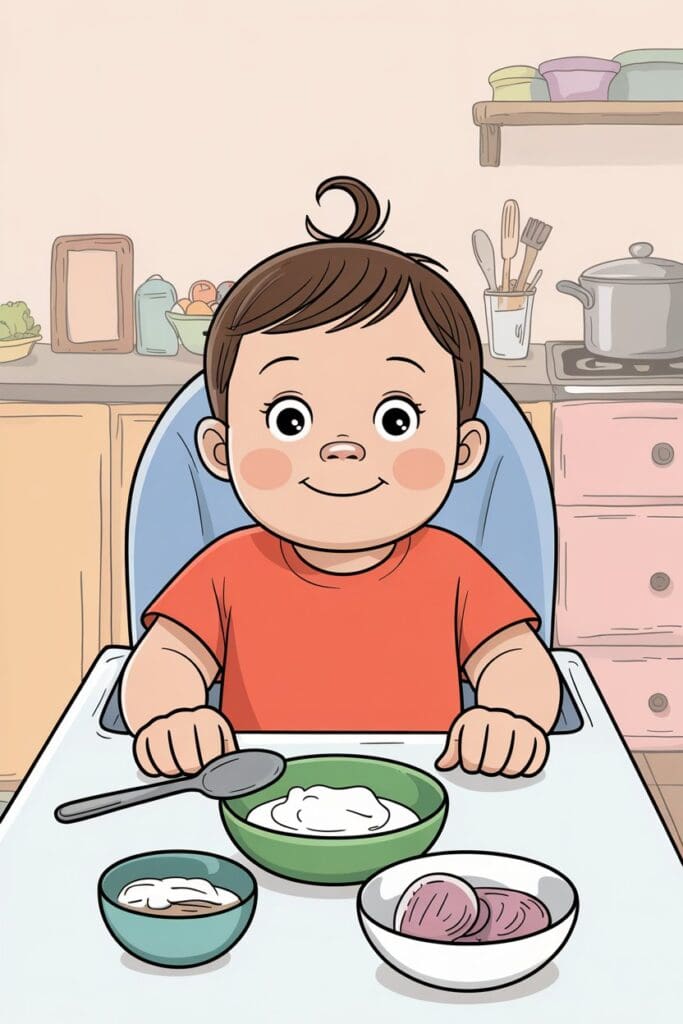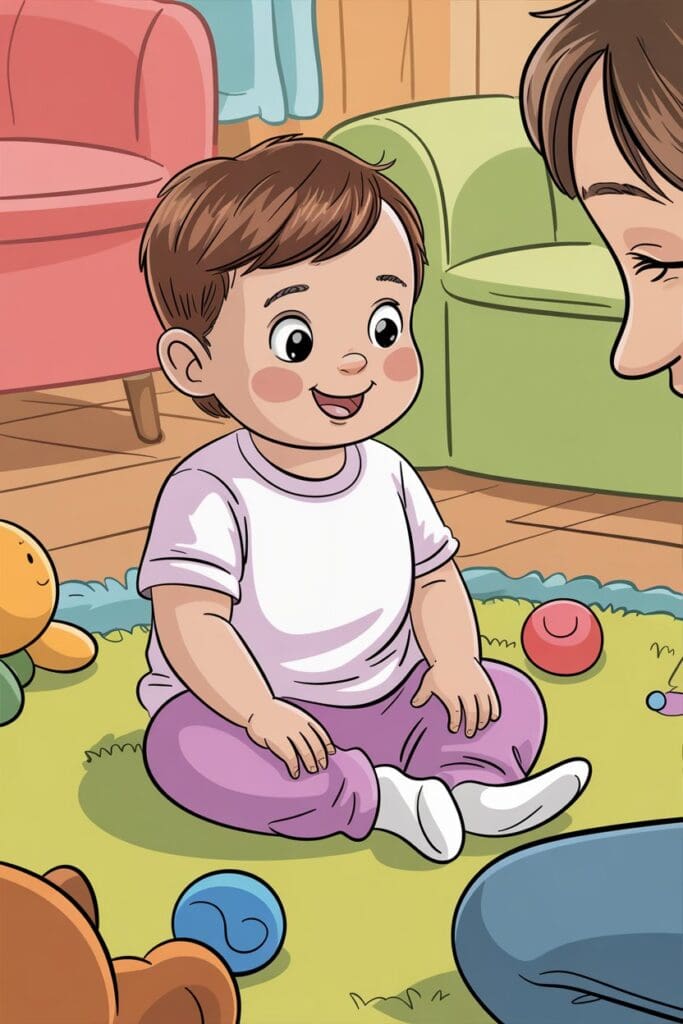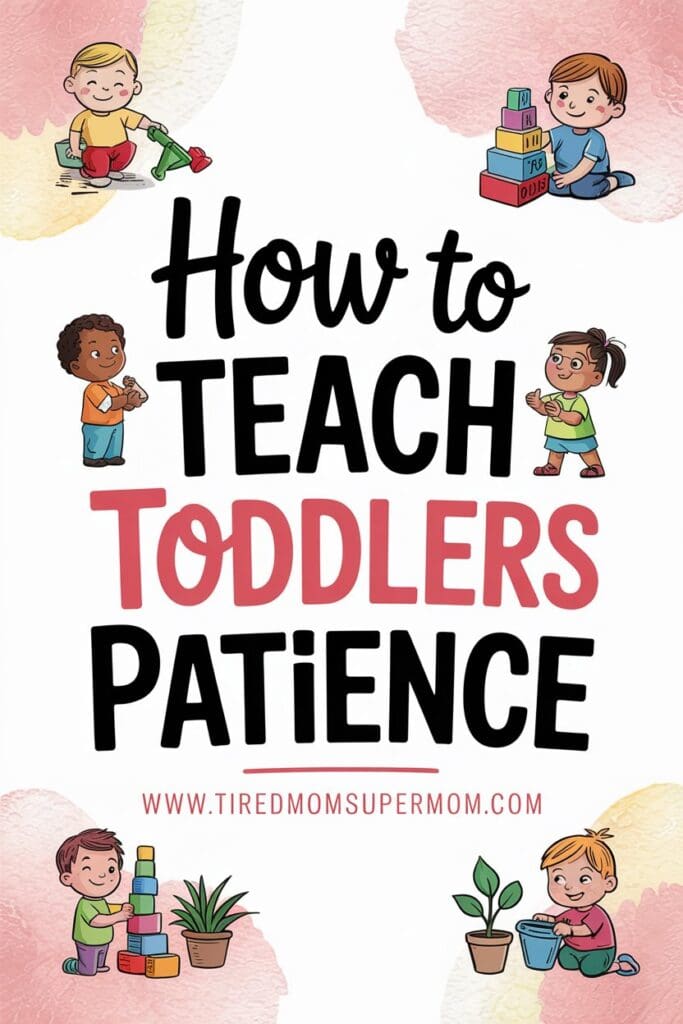How to Teach Toddlers Patience: 10 Gentle Tips That Really Work
If you have a toddler, you already know: patience isn’t exactly their strong suit.
Tantrums over waiting, meltdowns at bedtime — it’s all normal, but it doesn’t have to stay that way.
Teaching patience to toddlers is possible (and actually fun!) with the right strategies.
Here’s exactly how to teach toddlers patience without losing your mind — starting today.
Heads up: This post may include affiliate links. As an Amazon Associate, I earn from qualifying purchases—at no extra cost to you. Full privacy policy and disclosure here.
Why It’s Hard to Teach Toddlers Patience
Toddlers are wired for instant gratification.
Waiting even a few minutes can feel like an eternity to a 2- or 3-year-old.
Their brains are still developing impulse control, which means practicing patience is a skill, not an instinct.
In fact, research shows (why toddlers have more tantrums with mom) that toddlers save their most emotional moments for the people they feel safest with — another reason why building patience gently at home is so important.

10 Gentle Ways: How to Teach Toddlers Patience
1. Start With Short Waits
Begin with 10-15 second delays before handing over a toy or snack. Celebrate when they wait calmly!
Experts agree that how to teach toddlers patience starts with short, playful routines.
2. Narrate the Waiting
Say out loud: “I see you’re waiting so patiently while I cut your apple. Great job waiting!”
One of the easiest ways to begin practicing how to teach toddlers patience is through turn-taking.
3. Play Turn-Taking Games
Simple games like rolling a ball back and forth help toddlers practice waiting their turn.
You can also introduce problem-solving activities for toddlers to naturally encourage patience and persistence.
4. Use Visual Timers
Use a colorful timer to show how long they need to wait. Toddlers love seeing the countdown.
🛒 Amazon Pick:
Visual Countdown Timer for Kids
Visual timers are a powerful tool when learning how to teach toddlers patience.
5. Practice “Waiting Songs”
Sing a little “waiting song” during transitions. It makes the pause feel like a game instead of frustration.
Want to know how to teach toddlers patience during transitions like bedtime? Try narrating the wait.
6. Offer Praise Immediately
As soon as your toddler waits — even briefly — offer huge smiles, hugs, and praise.
7. Create “Patience Practice” Moments
Ask them to help set the table or gather toys while you “get ready,” adding small wait times into everyday routines.
Tip: A peaceful bedtime routine is another great daily opportunity for patience practice.
8. Read Books About Patience
Stories like Waiting Is Not Easy! by Mo Willems gently introduce patience in ways toddlers can understand.
🛒 Amazon Pick:
Waiting Is Not Easy! Book
9. Model Patience Yourself
If you’re feeling rushed or frustrated, narrate your own patience out loud: “I’m waiting calmly until it’s safe to cross the street.”
10. Stay Consistent
Teaching toddlers patience is a slow process. Celebrate small wins and be gentle when setbacks happen — especially after challenging moments like car seat tantrums.
11. Use Storytime Waits
During your daily reading routine, build in tiny “waiting moments.”
Pause briefly before turning the page and say, “Let’s wait patiently to see what happens next!”
These fun, low-stress pauses help toddlers practice self-control in a cozy, connected setting.

How Patience Skills Help Toddlers Later in Life
Helping your toddler build patience isn’t just about surviving tantrums — it’s an investment in their future success.
Children who learn to wait, take turns, and manage frustration at an early age often develop stronger emotional regulation skills as they grow. Studies show that patient kids are better equipped to handle school transitions, navigate friendships, and solve problems calmly.
Building patience early also boosts resilience, helping kids bounce back more easily when faced with challenges later in life.
Simple daily moments, like waiting their turn for a snack or listening during storytime, lay the foundation for a confident, self-regulated child.
FAQs About How to Teach Toddlers Patience
How long does it take for a toddler to learn patience?
It depends, but most toddlers start showing better impulse control between ages 3–5 with consistent practice.
What are some games that teach patience?
Simple games like Simon Says, Red Light Green Light, or turn-based board games are great for building patience.
Is it normal for toddlers to be extremely impatient?
Yes! Impatience is developmentally normal for toddlers. Your job is to gently guide them toward better self-control.
Can you teach a 2-year-old patience?
Yes, absolutely! Two-year-olds are capable of beginning to understand waiting in small doses.
Start with short 10–20 second waits paired with lots of praise, visual timers, and simple turn-taking games.
Keep expectations realistic — patience is a skill that develops gradually over time.
Final Thoughts on How to Teach Toddlers Patience
Teaching patience to toddlers is a journey — but with small, daily habits, your little one will build emotional resilience that lasts a lifetime.
Stay gentle, stay consistent, and celebrate every tiny moment of growth.
Your efforts today will help shape a more confident, calm, and patient child tomorrow.
For even more ideas on staying calm and connected while parenting toddlers, check out these calm parenting strategies that really work.
📌 Save This Post for Later!
🌟 Pin it now! 🌟
Don’t forget to save this guide for when you need quick ideas to teach patience at home.

